SYSTEMS
ENGINEERING
ENGINEERING
SYSTEMS DESIGN ● Product Realization ● QUALITY MANAGEMENT ●
CREDIT: Perseverance Rover on Mars By NASA/JPL-Caltech
// SYSTEMS DESIGN. PRODUCT REALIZATION. QUALITY MANAGEMENT.
SERVICES
User Experience (UX)
User Interface (UI)
System Architecture
Modular Units Design
FAST FEEDBACK LOOPS Under DESIGN CONTROLS
FREQUENT Integrations & Deployments
ISO 13485 Quality SYSTEM
Technical Management
User Experience (UX)
User Interface (UI)
System Architecture
Modular Units Design
FAST FEEDBACK LOOPS Under DESIGN CONTROLS
FREQUENT Integrations & Deployments
ISO 13485 Quality SYSTEM
Technical Management
Overview
Flowbit specializes in developing Software as a Medical Device (SaMD) applications — as such, we take a holistic Systems Engineering approach that includes cross-functional perspectives from Systems Design, Product Realization, and Quality Management. Flowbit Systems Design is guided by User Experience (UX) principles— incorporating knowledge of customer needs into navigation and user interface design and solidifying user workflows with usability testing. Flowbit’s Product Realization is built upon software design patterns and engineering best practices that include designing modular units, employing Agile development approaches, and establishing systems interfaces with continuous integration and continuous deployment tools. Flowbit Quality Management relies upon the guidance defined within the ISO 13485 Quality System. We align our technical management with this system.
Flowbit specializes in developing Software as a Medical Device (SaMD) applications — as such, we take a holistic Systems Engineering approach that includes cross-functional perspectives from Systems Design, Product Realization, and Quality Management. Flowbit Systems Design is guided by User Experience (UX) principles— incorporating knowledge of customer needs into navigation and user interface design and solidifying user workflows with usability testing. Flowbit’s Product Realization is built upon software design patterns and engineering best practices that include designing modular units, employing Agile development approaches, and establishing systems interfaces with continuous integration and continuous deployment tools. Flowbit Quality Management relies upon the guidance defined within the ISO 13485 Quality System. We align our technical management with this system.
DESIGN. ENGINEER. DELIVER.
2012 - 24©
SYSTEMS DESIGN
Defining Requirements, Objectives, & KPIS
USER EXPERIENCE
Our approach is rooted in User Experience (UX) principles. We will collaborate with you to understand your users’ customer profiles, the goals they want to achieve, and the journey they take to reach these goals. We work with you to co-identify KPIs, and establish what success would look like for your project. Additionally, we gather and document technical requirements, constraints, and specifications that are used as Design Inputs in your project’s activities required for product realization.
USER EXPERIENCE
Our approach is rooted in User Experience (UX) principles. We will collaborate with you to understand your users’ customer profiles, the goals they want to achieve, and the journey they take to reach these goals. We work with you to co-identify KPIs, and establish what success would look like for your project. Additionally, we gather and document technical requirements, constraints, and specifications that are used as Design Inputs in your project’s activities required for product realization.
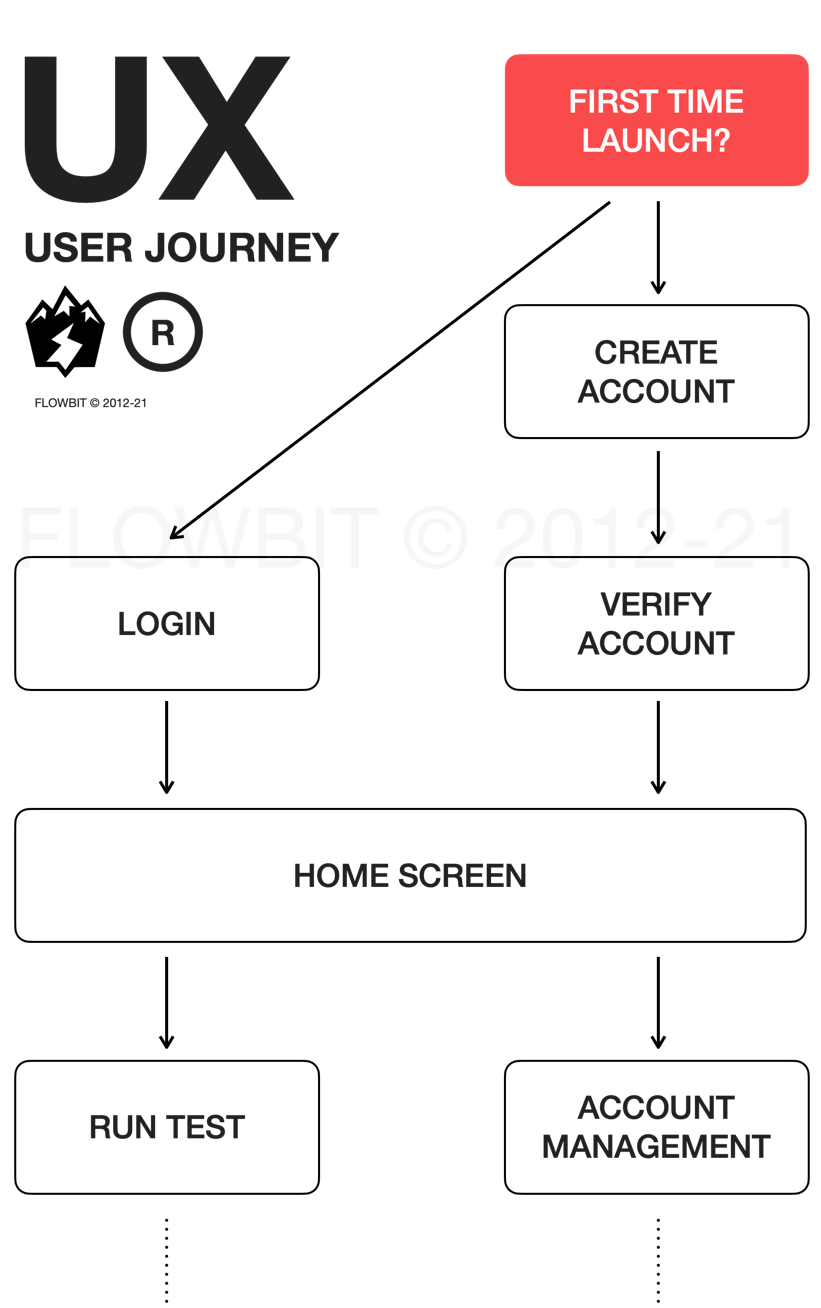
Designing For CONTEXT & INTENT
NAVIGATION DESIGN
By understanding your users’ context and intent, we design major navigational flows, such that the information hierarchy and navigation always makes sense. Quite simply, the user will be always able to tell, e.g., what they are doing, where they are in the process, and how to get help and information when they need it.
NAVIGATION DESIGN
By understanding your users’ context and intent, we design major navigational flows, such that the information hierarchy and navigation always makes sense. Quite simply, the user will be always able to tell, e.g., what they are doing, where they are in the process, and how to get help and information when they need it.
1 / 8
// SYSTEMS DESIGN
USER INTERFACE

FLOWBIT® utilizes a combination of Human Interface Guidelines — recommended by Apple for MacOS, watchOS, and iOS applications — and Material Design Guidelines — recommended by Google for Android and web applications.
FORMATIVE & SUMMATIVE STUDIES
USABILITY TESTING
USABILITY TESTING
In addition to recommendations and best practices provided by industry leaders, such as Apple and Google, Flowbit conducts its own evaluative research and analysis. In order to detect, remove, or mitigate any usability issues before a product is fully developed, we employ formative usability testing. To fully evaluate our product’s design against the goals of our users, we employ summative usability testing. Both of these evaluative research and analysis activities help us evaluate if the UX/UI design elements are working correctly and identify the best ways to improve product design.
2 / 8
// SYSTEMS DESIGN
SYSTEM ARCHITECTURE
HEALTHCARE ENTERPRISE
DESIGN PATTERNS &
BEST PRACTICES
DESIGN PATTERNS &
BEST PRACTICES
We work with you to logically decompose major functional areas of your product, allowing your conceptual technical system architecture to emerge. Additionally, we work to understand your enterprise integration needs and provide interoperable solutions, based on widely accepted industry standards. We architect our software systems in various layers and segmented sub-systems/units, giving you the building blocks to enable future product expansion and ensure longevity of the system. We ensure our solutions operate well within cost, performance, and environmental constraints. Our design process includes multiple risk analyses that identify, and eliminate or mitigate any threats to your business and patient health.
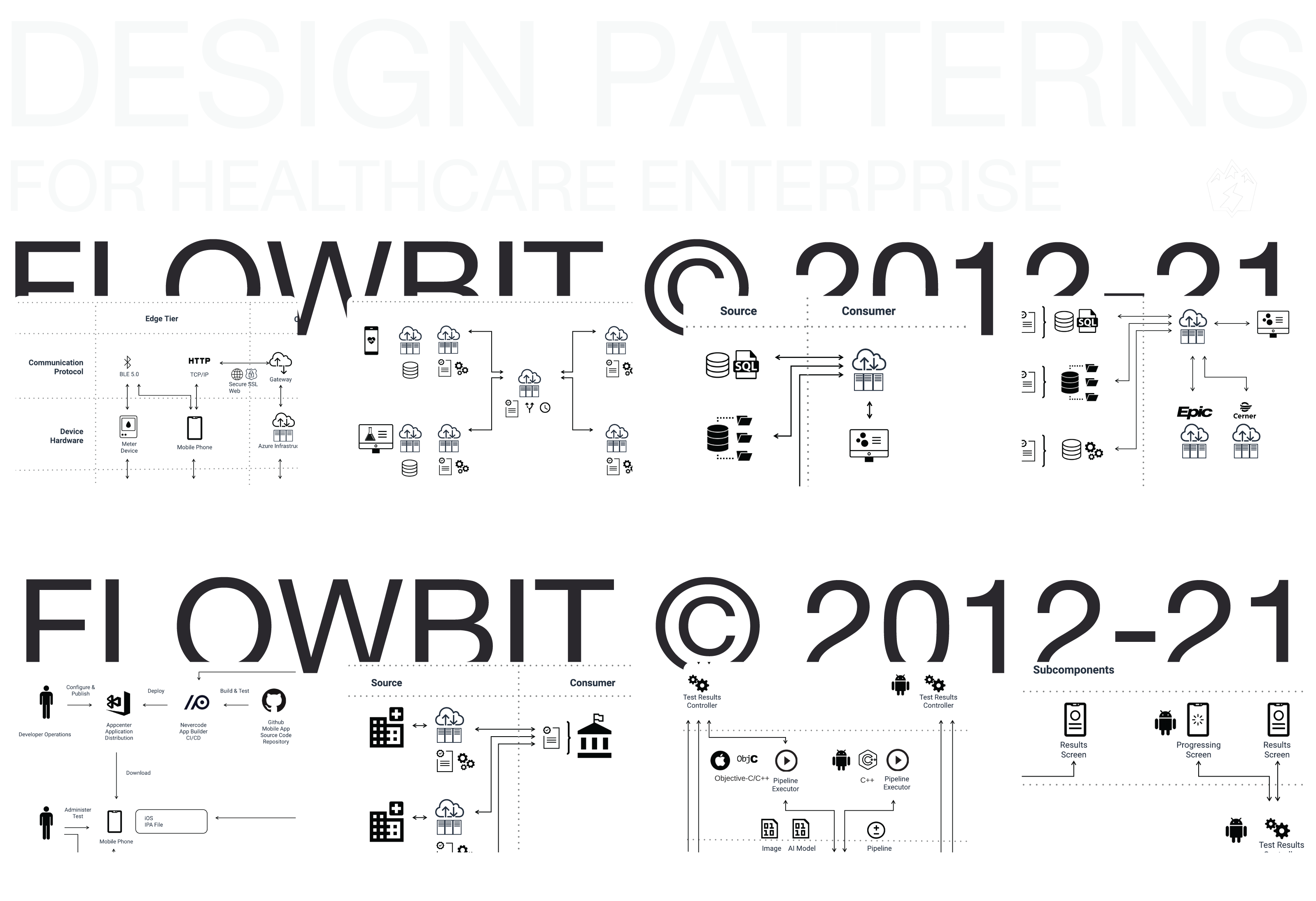
3 / 8
PRODUCT
REALIZATION
REALIZATION
SEPARATION OF CONCERNS
DESIGNING MODULAR UNITS
Flowbit works with modern technology platforms and protocols, such as iOS, Android, Bluetooth, TensorFlow, AWS, and Microsoft Azure. We have deep, industry-specific knowledge that allows us to develop modular subsystems made using these technologies. By focusing our design on single-purpose-oriented subsystems we break down the complexity of the overall system into smaller manageable parts. This approach — when coupled with a well-designed subsystem interface — allows us to test the modular subsystems with great efficacy. The end result is we get highly reusable, well-defined and -tested subsystem modules.DESIGNING MODULAR UNITS
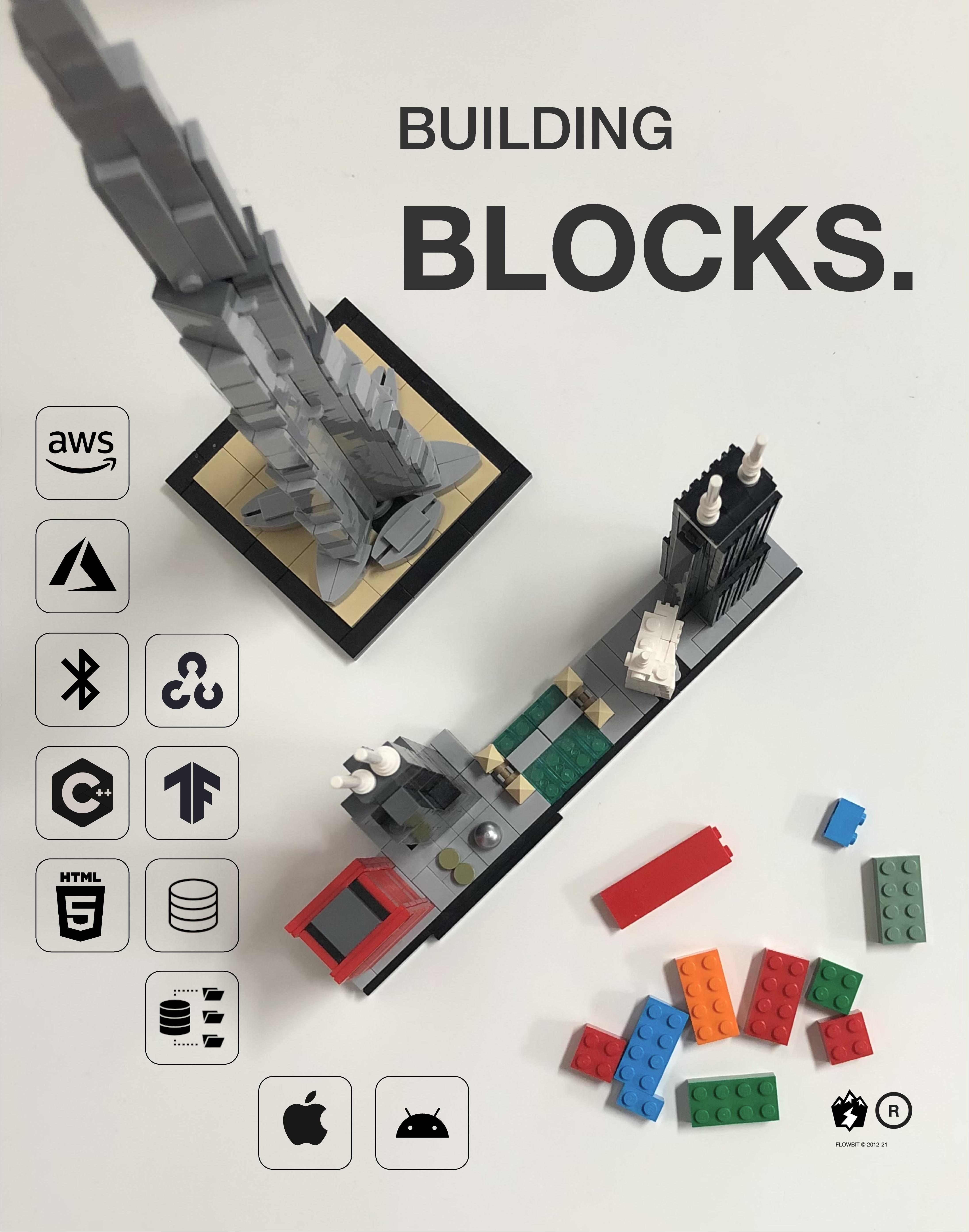
4 / 8
// PRODUCT REALIZATION
FAST FEEDBACK LOOPS UNDER DESIGN CONTROLS
AGILE DEV
AGILE DEV
We understand the importance of quality in a medical-grade software in terms of patient health risk and privacy. We develop software in compliance with Code of Federal Regulations (CFR) title 21 that apply to the Food and Drug Agency (FDA), as well as other laws like Health Insurance Portability and Accountability Act (HIPAA). As a result of these constraints, we develop detailed plans for testing at different levels, e.g., for module, integration, system, performance and user acceptance testing. These tests are developed in parallel by using Test Driven Development (TDD), as well as Verification Protocols, and are traced back to requirements, specifications, and regulatory compliance constraints. Additionally, we utilize agile development practices that include sprint planning, grooming, retrospectives, and daily scrums— all of which include input from cross-functional teams. This aids our decision making and, if needed, keeps us ready to respond to change by taking corrective and preventive actions.
5 / 8
// PRODUCT REALIZATION
FREQUENT INTEGRATIONS & DEPLOYMENTS
SYSTEMS INTERFACE
SYSTEMS INTERFACE
Software intensive system product design and development is a highly iterative and collaborative process. Establishing fast feedback loops is key to successful software deployment because it allows for frequent integrations and deployments in simulated— or as close to real— environments. We have expertise in integration planning for subsystems that range from firmware running on connected medical devices to AI- and algorithms-based medical test diagnostics on smartphones and or Cloud-based enterprise server processing. To help us achieve fast feedback loops, we use continuous integration and continuous deployment (CI/CD) tools, such as Jenkins CI/CD, Nevercode, Amazon Web Services Developer Tool Suite, and Microsoft Azure Visual Studio App Center.
The modules we develop are designed in a manner that allows for modular and system-wide testability using detailed protocols and specifications for frequent integration and deployments.
FLOWBIT's ability to design and develop for system interfaces, integration, and testability differentiates it from the competition.
6 / 8
QUALITY MANAGEMENT
ISO 13485
QUALITY SYSTEM
QUALITY SYSTEM
Flowbit utilizes well-defined and -documented processes as part of a coherent system to achieve consistent and predictable results. Our leadership is committed to ensuring your system is performing optimally by making necessary adjustments for projects, monitoring the quality system, and providing adequate resources. Flowbit owns our quality management system, and we are internally obligated to ensure that it is functioning properly, so that our clients and the FDA are confident that what we produce is quality controlled. Our Quality System uses Quality Management Framework - as defined per ISO 13485, and in compliance with 21 CFR Part 820, to ensure patient safety and device effectiveness when using Software as a Medical Device.
QUALITY MANAGEMENT FRAMEWORK
MAJOR QUALITY SUBSYSTEMS
MAJOR QUALITY SUBSYSTEMS
There are a total of 7 subsystems in a standard Quality Management System as defined per ISO 13485 and in compliance with 21 CFR Part 820. FDA review for medical devices focus on 4 major subsystems— as such, we have a robust process and activities to address these four subsystems, which include Corrective & Preventive Actions, Design Controls, Production & Process Controls, and Management.
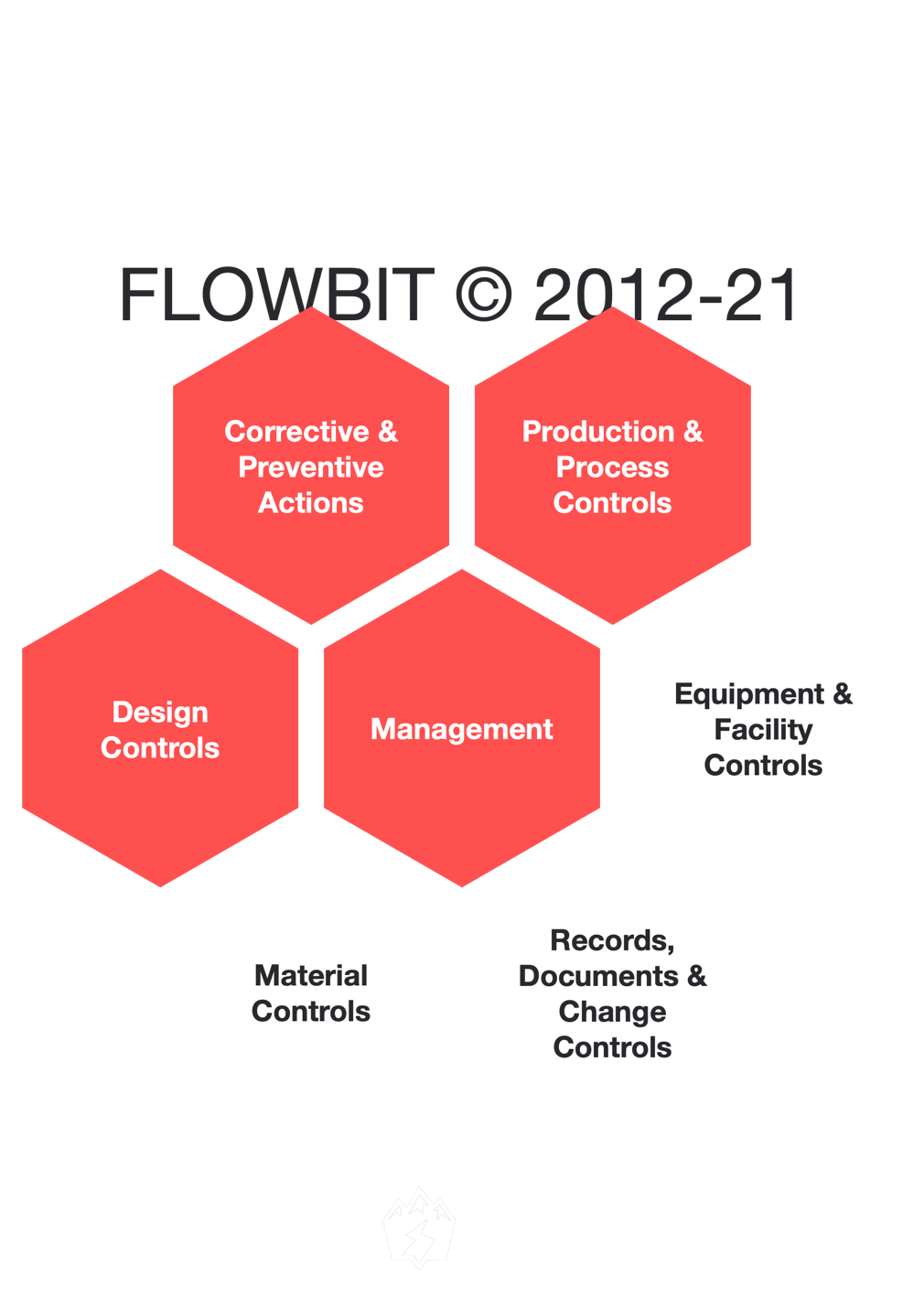
7 / 8
// QUALITY MANAGEMENT
PLANNING & COMMUNICATION
TECHNICAL MANAGEMENT
Our Technical Management is aligned with our Quality System. We utilize set processes for Technical Planning, Requirements Management, Technical Risk Management, Configuration, and Risk Management, which are all part of our Quality Management System. Flowbit utilizes technical management processes to establish and evolve technical plans (e.g., verification plans, software development plans). We utilize our well-documented technical plans and processes to manage communication across interfaces, to assess progress against the plans and requirements for the system products or services, to control technical execution of the project through to completion, and to aid in the decision-making process.TECHNICAL MANAGEMENT
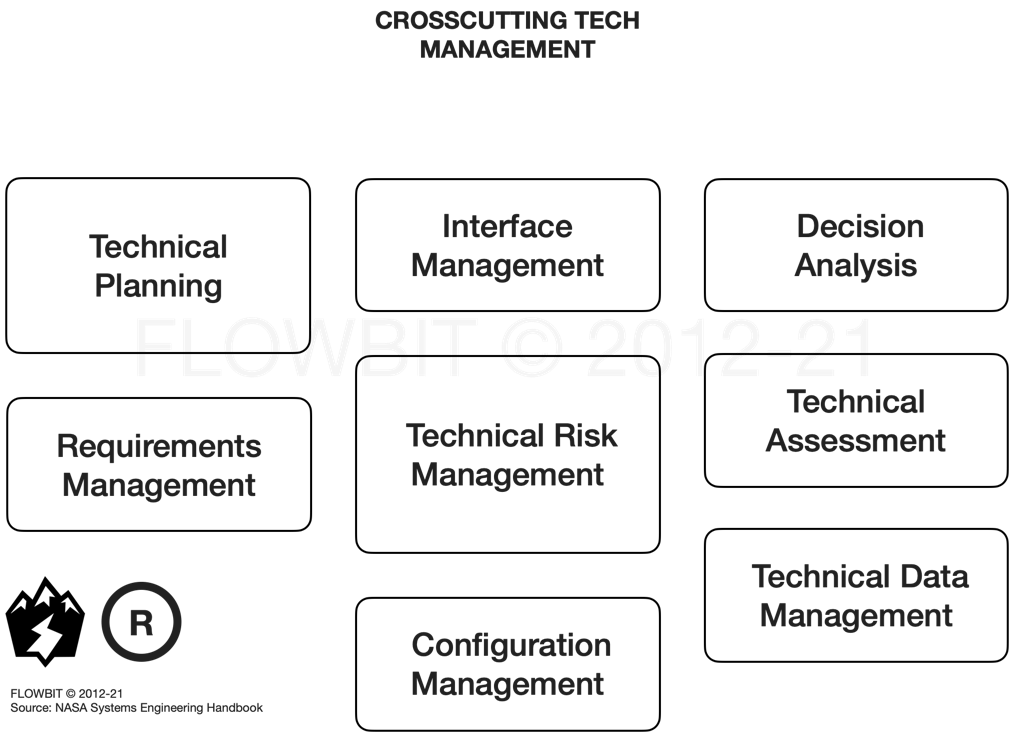
Interface and communication protocol definitions help with process and communications between disparate subsystems development, testing, and ownership transitions. As part of Flowbit's technical management, Flowbit works with you and other 3rd party vendors to assign authorities over relevant interfaces and protocols.
Planning and Communication in technical management is a recursive and iterative process. In practice, Flowbit's Technical Management plans are updated consistently at Key Decision Points (KDP) that help your project with consistent performance, controlled costs, and well-maintained schedules.
8 / 8
LEARN MORE
about our systems engineering approach, enterprise development patterns, and quality management systems for digital health Software as a Medical Device (SaMD) applications. Leave us a question or comment.